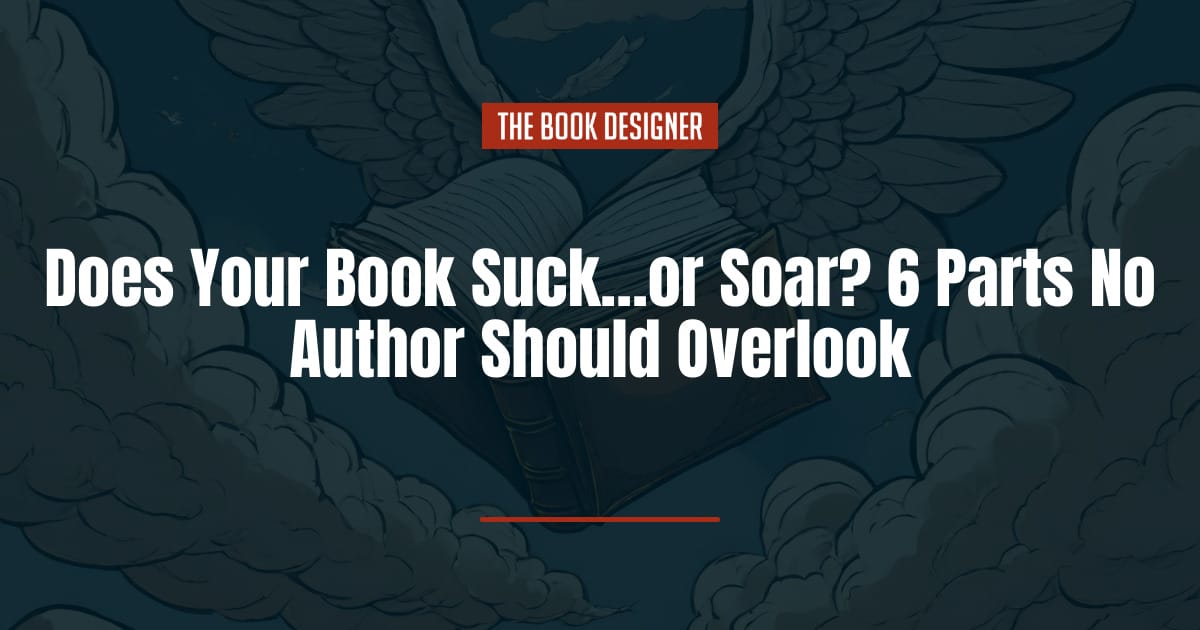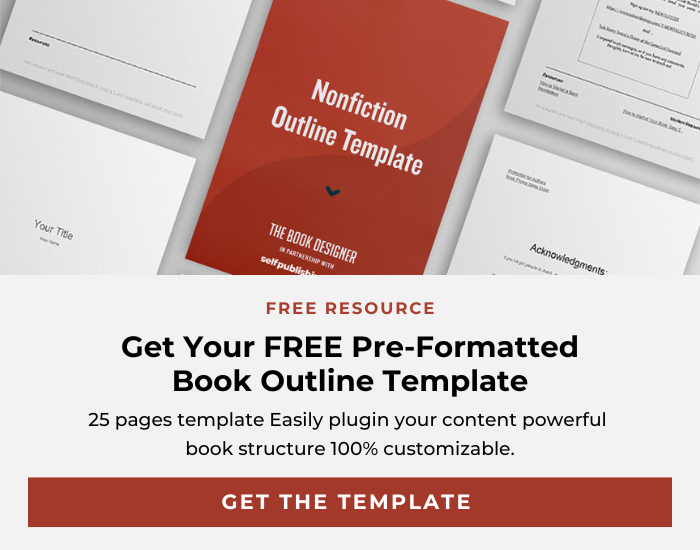Does your book suck?
Funny question, right? Not so funny when your book sales are low, and you’re not sure why. If you’ve ever felt that your book may not be all that it could be, trust your gut.
When you’re a self-publisher, the “book suck” meter is just as real for you as it is for traditional publishers. Unfortunately, as an independent publisher, you don’t often have access to reports, extensive research, and years of learning from your mistakes to help ensure your book doesn’t fall on the lower end of the acceptable scale.
Self-publishing offers a lot of freedom, not to mention the potential for higher profit, but it also comes with the burden of making sure that your book can stand up in a highly competitive marketplace. Self-publishing isn’t just about doing things yourself. Quality self-publishing is about making the same decisions that smart traditional publishers make so that when your book sits on the shelf next to a traditionally published one, it won’t scream, “Homemade!”
Below we’ll talk about the telltale signs of a subpar book and how you can improve those areas and bypass the poor quality status to ensure that your book soars above the rest (or at the very least, causes the competition to sweat a bit.)
Let’s look at what makes a high-quality book:
Book Cover Design
Does your front cover, spine, and back cover look professional?
One of the best ways to ensure you have a professional-looking cover is to hire a professional designer. A professional designer (freelancer or company) will not only have the creative chops to design a beautiful cover, but they will also understand industry standards as well as genre expectations. You may have a friend who is an amazing illustrator, but if she doesn’t understand composition, typography, color theory, your audience, and their expectations, you can end up with a beautiful illustration on your cover that’s overshadowed by bad fonts, poor spacing, and colors that don’t work.
Many self-published authors make the mistake of creating a cover themselves because they are creative types—not designers. Since books are judged by their covers, the safest step to take when publishing independently, especially if it’s your first book, is to hire a professional designer to create the book cover from scratch or purchase a pre-made template (less expensive).
It takes time to understand the book market and what your ideal readers want, so start with a professional designer first, and then later if you want to try designing future covers, you can do so, just tread lightly.
So, how do you keep a potentially great book from spiraling down the drain?
Start by researching other covers (bestsellers) and asking yourself the following questions:
- Is the cover plain and uninteresting or does it pack a punch?
- Is the title magnetic?
- If there is an image, is it appealing?
- Are the elements of the book (images, fonts, title, sentences) spaced well?
- Does it use keywords and phrases that connect with the reader?
- Does the book cover fit the genre? If so, in what way(s)?
- Are the colors appealing?
A Blurb That Gets Attention
A book cover is the first invitation a potential reader receives to read your book. Each part of the cover is a puzzle piece that comes together to create a picture of what’s inside. If any piece of the puzzle is missing, then the final picture is incomplete.
While the front cover grabs a reader’s attention and gets them to flip the book over, the back cover blurb should hook and reel them in. You can think of a blurb like a movie trailer narrator who dangles just enough information about the thriller and its characters in front of you to make you want to see the movie.
Boring, static blurbs that sound like a list of ingredients on a cereal box will not entice a reader to spend their money or their time when there are so many other books on the market that sound more interesting.
Take the time to craft a book blurb that makes a reader ask questions and want to read your book to find the answers. The 10-15 seconds it takes someone to read a back cover description can make the difference between a sale and someone passing it over for the next book in line.
Your Story/Content
Is your book interesting? Not just to you but to the general reader who wants to know more about the subject matter or storyline. The words you write as an author are never really about you but about your audience.
The most engaging nonfiction books are not about impressing people with all that you know but rather inviting them into your world to share your passion. Unputdownable fiction immerses your reader into your story rather than offering a seat in the nosebleed section of your book’s stadium where they have to piece your story together through little bitty binoculars.
Books that stay on the bestseller lists for weeks and years (e.g. Where the Crawdads Sings by Delia Owens) are not a fluke. While landing on a bestseller list initially can be the right combination of great marketing, early sales, and knowing how to make algorithms happy, staying on a bestseller list is about quality content that keeps readers recommending a book to others.

Book Editing
Every book needs editing. You can be the best writer in the world with an uncanny ability to find every single grammatical error known to man, but true objectivity can only come from someone on the outside looking in. This is where a professional editor comes in, someone who understands your audience, genre, and what it will take to make your book do well in the marketplace.
Of all the different types of editing, the main three are:
- developmental editing – or “big picture” editing. This type of editing ensures that your book has the right structure and foundation. It takes a look at areas like book flow and overarching themes as well as chapter and section order. Developmental editing ensures you have all the foundational corner pieces of your book’s puzzle in place before you begin putting together the more detailed interior pieces.
- copyediting – copy editing focuses on the nuts and bolts of your manuscript—the smaller components that act as the glue for the different book parts. This can include everything from sentence structure and word choice to tone and adherence to style guides (e.g. Chicago Manual of Style, APA, MLA)
- proofreading -Proofreading is the last step on the editing journey. It comes after the book has been typeset (formatted for print) and before printing. A proofreader ensures that nothing has been missed during the editing process. She dots all the i’s and crosses all the t’s. When you have multiple hands on your manuscript, or you’ve read it so many times that you’re seeing double, it’s easy for small errors to slip through the cracks. A proofreader’s job is to find and correct those errors before the book gets printed.
Book Interior Design
How your book is formatted on the inside matters. A professionally formatted book is easy on the eyes. The font is the right size and the spacing between lines leaves enough white space so that your eyes move through the text easily. Pull quotes and images add variety to the page for nonfiction books and keep things interesting. Surprisingly, fiction which offers the most creative freedom storywise is often limited visually, unless it’s a children’s book. With fiction, it is even more critical that the book’s layout is clean and the fonts are appealing. When you’re reading a 100,000-word novel, eye fatigue can be a real issue. A properly formatted book keeps your readers happy and eye strain at bay.
A Book That Meets Industry Standards
When you open the pages of a book, there’s an expectation that your book will not only meet content expectations but also follow a specific sequence that has the same or similar sections as other books. Self-publishing a book is not the time to throw industry standards out the window and make up your own rules (unless you’ve tested them first and know they’ll work.)
Overall, if you want to know whether or not your book meets industry standards, do your research and compare. Take a look at the top-selling books in your genre. Look at the cover, blurb, writing, formatting, and quality. Ask yourself, “Does my book measure up?” If not, then it’s time to tighten things up.
No More Book Suck!
Gone are the days when self-published authors didn’t have access to book professionals. Today you can find professional book cover designers, editors, and formatters at almost every price point, so no more excuses.
If you’re on a limited budget, you can still find affordable options like pre-made covers, formatting software like Atticus and Vellum, and grammar help with apps like Grammarly and Prowriting Aid.
Truthfully, if your book is unprofessional, it may sell a few copies right out of the gate, but those sales will be short-lived. Books with staying power meet professional standards and there’s no way around a good, quality book.




